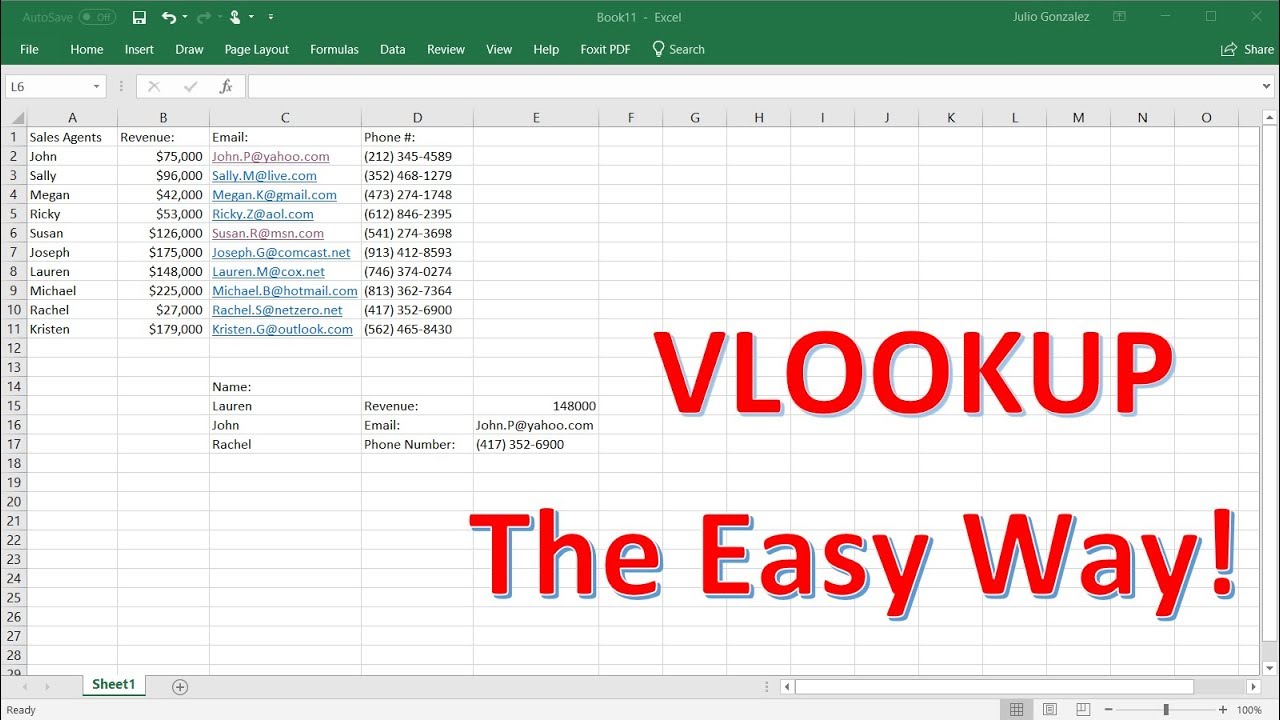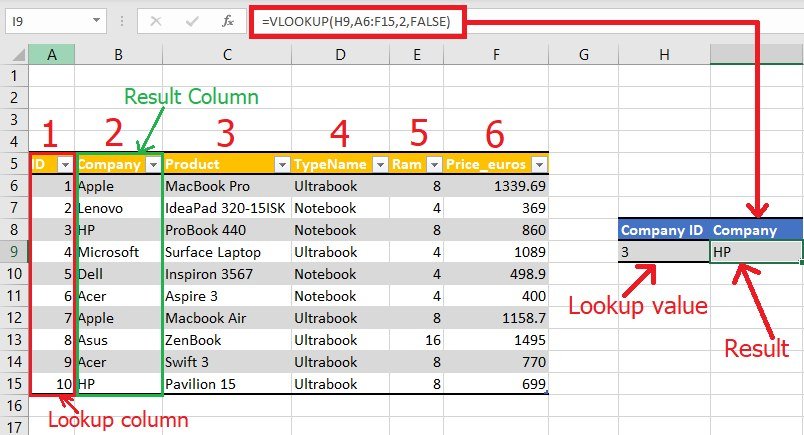5 Quick Ways to VLOOKUP Across Entire Excel Sheet

Mastering Excel functions like VLOOKUP can significantly enhance your efficiency when working with large datasets. While VLOOKUP by default searches only within the specified column, there are techniques to make it search across the entire Excel sheet. Here are five quick methods to extend the capabilities of VLOOKUP for such searches:
Method 1: Using Absolute Cell References

By setting up your VLOOKUP formula with absolute cell references, you can make the function scan through the entire sheet:
- Select your lookup value. Suppose it’s in cell A1.
- Set up the VLOOKUP formula like this: =VLOOKUP(A1, A1:Z1048576, 2, FALSE). Here, the range A1:Z1048576 covers the entire sheet up to column Z (which you can extend if needed).
Method 2: Dynamic Table Expansion

Excel Tables automatically expand when you add data, making VLOOKUP work across the entire table dynamically:
- Convert your data into an Excel Table (Ctrl + T).
- Use VLOOKUP with the table name instead of a range. Example: =VLOOKUP(LookupValue, TableName, 2, FALSE).

Method 3: Named Ranges

Using named ranges can simplify your formulas and make them work across larger datasets:
- Define a named range for the entire dataset, say “AllData”, encompassing columns A to Z or further.
- Use VLOOKUP like this: =VLOOKUP(LookupValue, AllData, 2, FALSE).
Method 4: Indirect Function

This method combines VLOOKUP with INDIRECT to allow for more flexibility:
- Use =VLOOKUP(A1, INDIRECT(“A1:” & ADDRESS(1048576, 26)), 2, FALSE) to dynamically set the range for VLOOKUP to search across columns A to Z.
🔍 Note: INDIRECT makes the formula less transparent as it doesn't show the actual cell range in the formula bar. Be cautious when modifying data within such ranges.
Method 5: Index-Match as an Alternative

While not VLOOKUP, Index-Match offers a robust alternative for searching across entire sheets:
- Set up the formula as =INDEX(EntireSheet, MATCH(LookupValue, EntireSheet, 0)). Here, “EntireSheet” represents your entire dataset.
| Method | Use Case |
|---|---|
| Absolute References | When you need to scan from a fixed lookup value. |
| Dynamic Table | When your data grows or shrinks frequently. |
| Named Ranges | To simplify formula references over large datasets. |
| Indirect Function | To dynamically set search ranges for evolving data. |
| Index-Match | As an alternative to VLOOKUP for more complex lookups. |

In summary, these methods allow you to enhance VLOOKUP's functionality to look across an entire Excel sheet. Each approach has its strengths, catering to different needs and scenarios you might encounter while working with data in Excel. Utilizing these techniques can make your data manipulation tasks much more efficient.
What’s the difference between VLOOKUP and INDEX-MATCH?

+
VLOOKUP looks up values in a column to the left of the return value, while INDEX-MATCH provides more flexibility by not requiring the lookup value to be in the first column. INDEX-MATCH is also generally more performant with large datasets.
Can VLOOKUP look at the entire sheet without specifying a range?

+
Out of the box, VLOOKUP does require a specific range to search. However, through methods like dynamic named ranges or table expansion, you can make it work across an entire sheet.
Why would one use INDIRECT with VLOOKUP?

+
Using INDIRECT with VLOOKUP allows you to dynamically change the range VLOOKUP searches based on the sheet’s content or user input, making your formulas more adaptable.